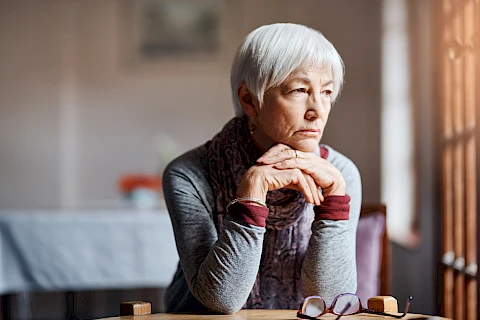
Some seniors may feel down or unusually tired as the seasons change. This could be a sign of Seasonal Affective Disorder (SAD), which usually occurs in the autumn and winter months. Recognizing SAD in seniors is important because if left untreated, it can seriously impact their quality of life.
What Is Seasonal Affective Disorder?
Seasonal Affective Disorder (SAD) is a form of depression that happens at the same time every year, typically in the fall and winter. Shorter days and less sunlight can lead to a drop in serotonin levels and affect one's mood. Although SAD can affect anyone, seniors are particularly vulnerable due to lifestyle changes related to aging, like less physical activity and increased isolation.
Recognizing the Signs of SAD in Seniors
Caregivers should watch for significant changes in a senior's behavior, emotional state, and physical well-being.
- Behavioral changes may include withdrawing from social interactions, losing interest in activities they once enjoyed, and reduced energy and motivation.
- Emotional symptoms can manifest as depression or persistent sadness, increased irritability or anger, and heightened anxiety levels.
- Physical symptoms are often noticeable as well, including constant fatigue or lack of energy, changes in sleep patterns (like sleeping too much or too little), and changes in appetite (including overeating or loss of appetite).
Effective Strategies for Supporting Seniors With SAD
Light therapy can be an effective treatment for SAD. This involves sitting near a light box that mimics natural sunlight, typically for about 20-30 minutes in the morning. However, it's essential to consult a healthcare provider before starting light therapy to ensure it's safe for the senior in your care.
Encouraging physical activity is another helpful strategy. Exercise can help combat SAD by boosting mood and energy levels. Simple exercises suitable for seniors include walking (even if it's just around the house or yard), gentle yoga or stretching exercises, and light weightlifting routines.
Social interaction also plays a big role in fighting SAD. Encourage seniors to attend community events or senior center activities, spend time with family and friends, and join clubs or groups that match their interests. These activities can help combat feelings of isolation and provide a sense of purpose and connection.
Lastly, maintaining a healthy diet can help manage SAD symptoms in seniors. Consider incorporating foods high in omega-3 fatty acids like fish and nuts into their diet. Include plenty of fruits and vegetables, and limit their intake of sugar and processed foods. A balanced diet can contribute to overall well-being and help stabilize mood.
When to Seek Professional Help
Sometimes, despite your best efforts, professional help may be needed. Indicators that it's time to seek professional help include symptoms that continue to worsen, signs of self-harm, noticeable weight loss or gain, or persistent insomnia. When approaching the topic with a senior, express your concerns gently. Let them know that getting help is a sign of strength, not weakness.
Discover Compassionate Senior Care
Recognizing and addressing SAD in seniors is critical. From understanding the symptoms to employing effective strategies like light therapy, physical activity, social interaction, and a balanced diet, caregivers can help seniors manage SAD.
Stay vigilant and proactive to ensure the well-being of your loved ones. For personalized support and professional assistance in Sheboygan, Plymouth, Cedar Grove, Port Washington, and Mount Calvary, contact us at Senior Helpers Sheboygan. Your loved ones deserve the best care, especially during the colder, darker months.